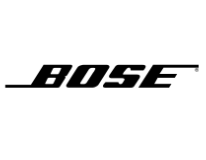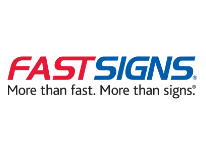Top CNC Router Features to Look for in 2025
CNC routers in 2025 are smarter, faster, and more integrated than ever. From automated tool changes to improved software compatibility, today’s CNC machines are designed for precision and speed. For businesses looking to stay competitive, investing in the right equipment is more than a purchase — it’s a strategy.
A feature-rich machine can improve output quality, reduce downtime, and increase long-term ROI. Whether you are running high-volume production or custom fabrication, choosing the right CNC router affects every stage of your workflow. Modern demands require solutions that support consistency, accuracy, and adaptability in real-time.
This guide breaks down the essential features serious buyers should look for — nothing generic, just direct value. CAMaster will focus on what matters most in 2025: smart automation, reliable construction, and user-friendly controls. If you are considering an upgrade or exploring CNC machines for sale, this overview will help you make an informed decision.
Key Performance Features to Prioritize in 2025
CNC routers in 2025 are designed to handle complex projects with greater precision and efficiency. As demand for accuracy and speed grows, focusing on key performance features is critical. Buyers must evaluate build quality, cutting speed, and material compatibility before making a decision.
High-Speed Spindles
Modern CNC router machines rely on spindles that support adjustable speeds up to 24,000+ RPM. This range helps optimize cuts across wood, plastics, and metal. Air or liquid-cooled systems should be selected based on how often the machine will run.
Rigid Frame & Build Quality
A stable frame is essential for clean, accurate cuts. Steel or cast-iron structures help absorb vibration during high-speed passes. For larger CNC router tables, reinforced gantries add the extra support needed to maintain precision.
Drive System: Rack & Pinion vs Ball Screw
The type of drive system affects how smoothly and accurately the machine operates. Rack and pinion on longer axis and ball screw on shorter axis provides the best combination of speed and precision which is ideal for cutting large sheets. Ball screw systems offer tight tolerance and fine detailing.
Z-Axis Travel & Cutting Area
Your CNC router should match the size and type of materials you plan to cut. Machines with extended Z-axis travel allow for deeper cuts and detailed 3D carving. This feature is especially useful when working with thicker stock or layered designs.
Choosing a CNC router with these performance features helps maximize output and minimize rework. Whether you’re exploring CAMaster solutions or reviewing CNC routers made in USA, focus on machines built to deliver lasting precision.
Smart Automation and Connectivity Features
Automation is reshaping how CNC routers operate in 2025. Built-in smart features save time, improve accuracy, and reduce user intervention. Whether you’re scaling production or handling custom work, automation makes a real difference in performance and consistency.
Auto Tool Changer (ATC)
An auto tool changer is essential for jobs requiring multiple bits. It speeds up tool changes without pausing the project. Reducing manual handling also helps avoid tool errors and improves cut quality over longer runs.
Digital PLC Controller
Modern machines now include PLC digital controllers ith easy-to-use user interfaces. These modern controllers simplify operation due to their advanced features. Wth job preview and onboard storage, users can quickly adjust or repeat cuts without extra setup time.
Wi-Fi and Ethernet Integration
CNC routers with built-in network support allow remote access and job monitoring. This is useful in smart workshops or multi-machine environments. It’s especially beneficial for managing high-volume jobs on larger CNC router tables.
CAM/CAD Software Compatibility
A good CNC router must integrate smoothly with CAM/CAD programs like Fusion 360 and VCarve. Direct software compatibility speeds up toolpath generation and avoids formatting issues. It also helps reduce setup time and improves production accuracy.
Even a small CNC machine with smart features can outperform older systems. Buyers exploring American-made CNC routers should prioritize automation that enhances efficiency and minimizes operator error.
Material Versatility and Tooling Support
A CNC router’s ability to handle multiple materials is critical in 2025. Buyers need machines that switch between jobs with ease. Material versatility expands project types and boosts overall shop efficiency.
Spindle Speed Control
Spindle speed control is essential when cutting different materials like wood, plastic, foam, and metal. Each material responds to speed differently. Slower speeds prevent burning, while higher speeds improve cut quality on harder surfaces.
Tool Compatibility and Collet Sizes
ER collets allow CNC routers to work with a variety of tool sizes. This increases flexibility in material choice and cut style. Always confirm supported shank sizes and tool lengths before purchasing a CNC machine.
Dust Collection Porting
A clean workspace matters for both safety and precision. Look for dust collection ports that match standard vacuum systems. These ports help maintain visibility and reduce debris, especially when working with MDF or plastic.
Adaptive Feed Rate Control
Machines with adaptive feed rate control adjust automatically during dense material transitions. This protects bits from overheating or chipping. It also maintains smoother edges and extends tool life during long jobs.
Whether you are using a CNC router for aluminum or exploring options for a CNC router machine for wood, versatility matters. Top CNC routers with smart tooling features can handle diverse materials without compromising performance or finish.
Safety and Operator-Focused Features
Modern CNC routers prioritize safety alongside performance. Built-in protections reduce risk, while operator-focused features improve usability and confidence. Buyers in 2025 should not overlook safety when choosing a machine.
Emergency Stop and Limit Switches
Every quality CNC router should include multiple emergency stop buttons within quick reach. These stops allow fast response during issues. Soft and hard limit switches also help prevent crashes and reduce accidental tool damage.
Enclosed or Semi-Enclosed Work Areas
Enclosed designs protect users from debris and moving parts. These features are especially important for CNC routers with higher RPM spindles. Noise and airborne dust are also reduced, creating a cleaner, safer workspace.
Built-in Lighting and Visibility
Machines with LED lighting directly over the work area support accurate monitoring. This is especially helpful for fine details and inlays. Clear visibility lets operators inspect cuts without needing external lights or flashlights.
Access Control & User Permissions
Access controls allow shop owners to manage who can change settings or load new jobs. Restricting tool changes or spindle adjustments adds another layer of safety. It’s ideal for schools, teams, or any multi-user CNC workspace.
Even the best CNC routers must be safe to operate daily. Whether you’re running top-rated CNC routers or a small CNC machine, smart safety features protect both people and equipment.
Maintenance and Reliability Enhancements
Long-term performance depends on how well a CNC router manages wear and maintenance. Machines built for reliability require fewer service calls. In 2025, buyers should focus on features that reduce downtime and support consistent output.
Automatic Lubrication Systems
Automatic lubrication systems keep moving parts in top condition without constant manual checks. Rails, screws, and bearings stay protected during extended use. This feature lowers the need for frequent service and ensures smoother motion.
Dust-Proofed Electronics and Components
Dust is a major issue in high-volume CNC environments. Sealed electronic housings and internal fans block particle buildup. This design is especially valuable for CNC router machines for wood and other debris-heavy materials like MDF.
Error Logging and Diagnostics
Smart routers now include built-in diagnostics for better maintenance tracking. Systems log errors, spindle loads, and run histories. This data allows for quicker troubleshooting and minimizes downtime after a fault occurs.
Modular Component Design
Modular parts simplify replacement and future upgrades. If a section fails, you can swap only that part. This reduces both service time and repair costs across all types of CNC routers made in USA.
Even a USA-made CNC router benefits from a thoughtful design that cuts down on wear. Reliability-focused machines ensure your shop keeps running without constant interruptions or costly repairs.
Zoned Vacuum Tables
Zoned vacuum systems hold down sheets more efficiently. Only the necessary zones activate, reducing power use during smaller jobs. This feature is helpful when cutting full sheets on large CNC router tables.
Resume Function After Power Loss
Unexpected power cuts can ruin jobs. The resume function picks up where the machine stopped. It saves both time and materials during unexpected shutdowns.
Even small upgrades like these give top CNC routers an edge. Shops looking for the best CNC routers should consider features that offer flexibility without sacrificing performance.
Bonus Features That Add a Competitive Edge
Some features go beyond the basics and offer real advantages in specific workflows. These extras help shops work smarter and faster. For buyers in 2025, advanced options can increase value without adding unnecessary complexity.
Rotary Axis / 4th Axis Support
Adding a rotary axis opens up new project types. It allows carving on round stock like pipes and columns. This feature is useful for producing signs, furniture parts, and detailed sculptures.
Camera-Based Registration Systems
Registration cameras help align printed or pre-cut materials with precision. They’re common in sign shops using detailed graphics. This tech improves cut accuracy and reduces waste from misalignment errors.
Conclusion
Buying a CNC router in 2025 is about feature precision — not guesswork. Machines today offer more options than ever before. But not every feature fits every workflow, and knowing the difference matters.
Focus on the performance, automation, safety, and durability features that align with your materials and production style. Whether you’re cutting wood, plastic, or metal, the right setup makes every job easier. Features — not size or price alone — determine how well your machine performs day after day.
Start by listing your must-haves before browsing CNC machines for sale. Consider how you’ll use the machine and what materials you’ll run most. These details guide smarter buying decisions and help avoid costly upgrades later.
The right features equal better cuts, safer work, and a stronger return on investment. From small CNC machines to top-rated CNC routers, fit matters more than flash. If you are considering a CAMaster system or another American-made router, match its features to your real-world needs.
In the end, precision, safety, and productivity start with picking the right machine — not just any machine.
Looking to invest in a CNC router that meets today’s performance standards? Choose a feature-rich machine built for precision, safety, and reliability. Whether you’re running a small CNC machine or managing large-scale production, the right features drive better results.
Call 770-334-2448 today to request a quote and find a CNC solution that fits your workflow and goals.
Want to upgrade your CNC workflow?
Discover our industrial-grade CNC solutions tailored to your needs. Learn more →















